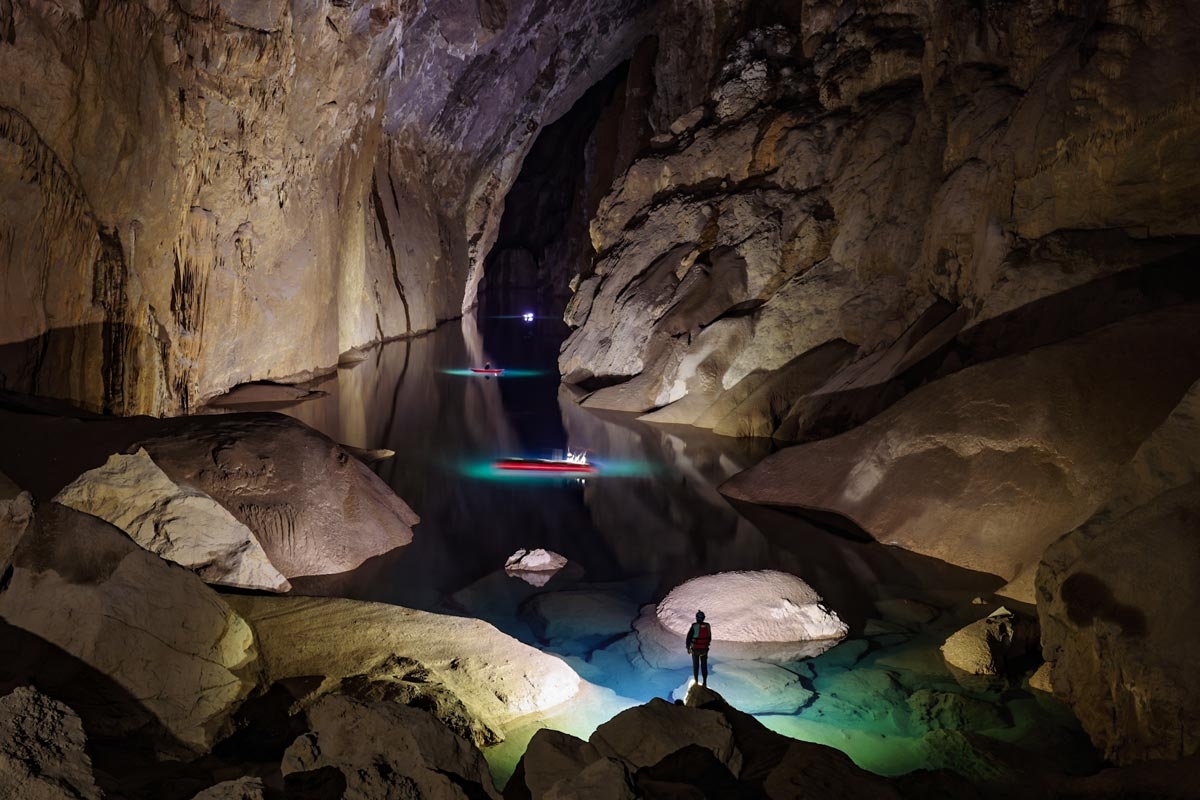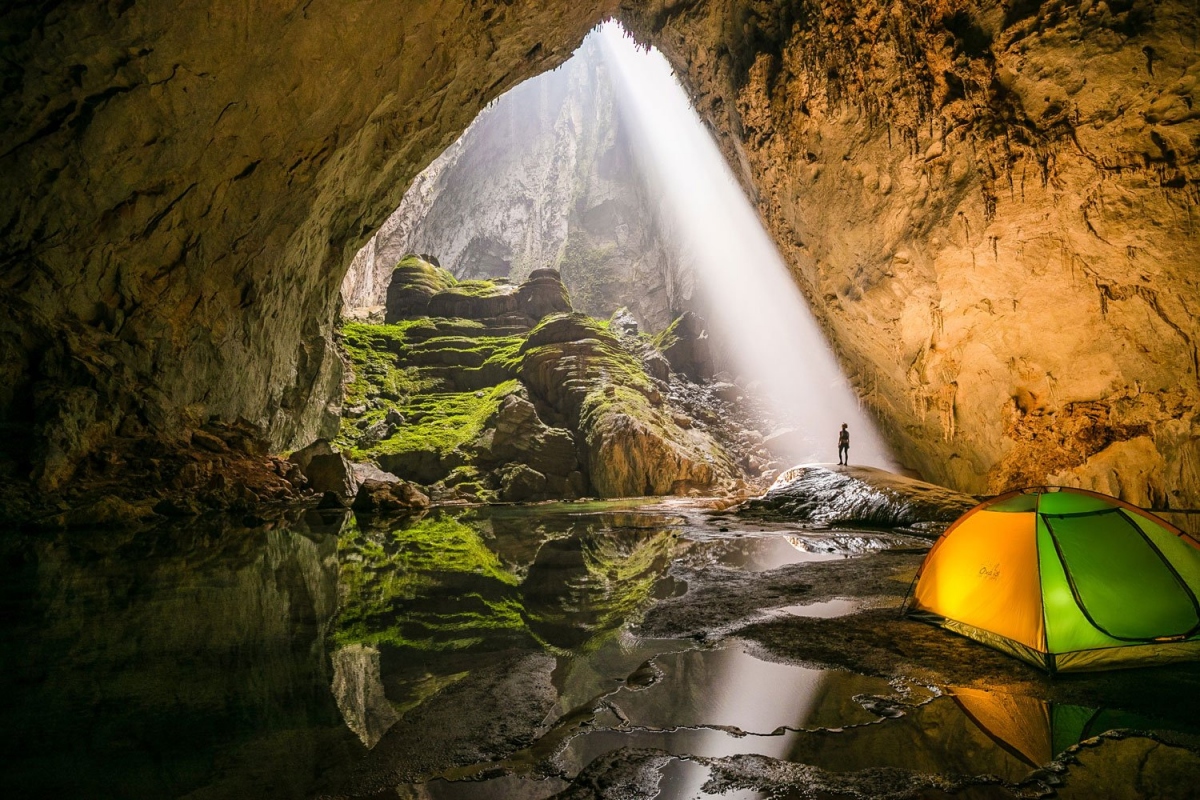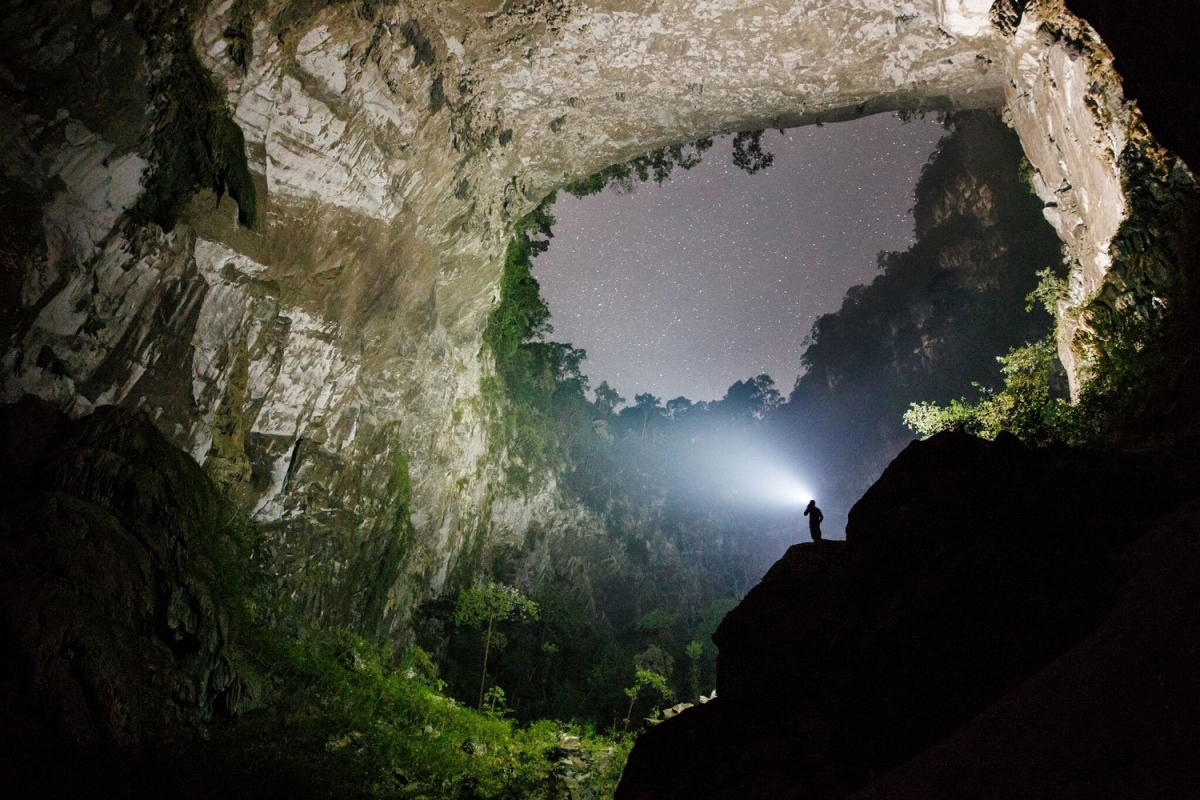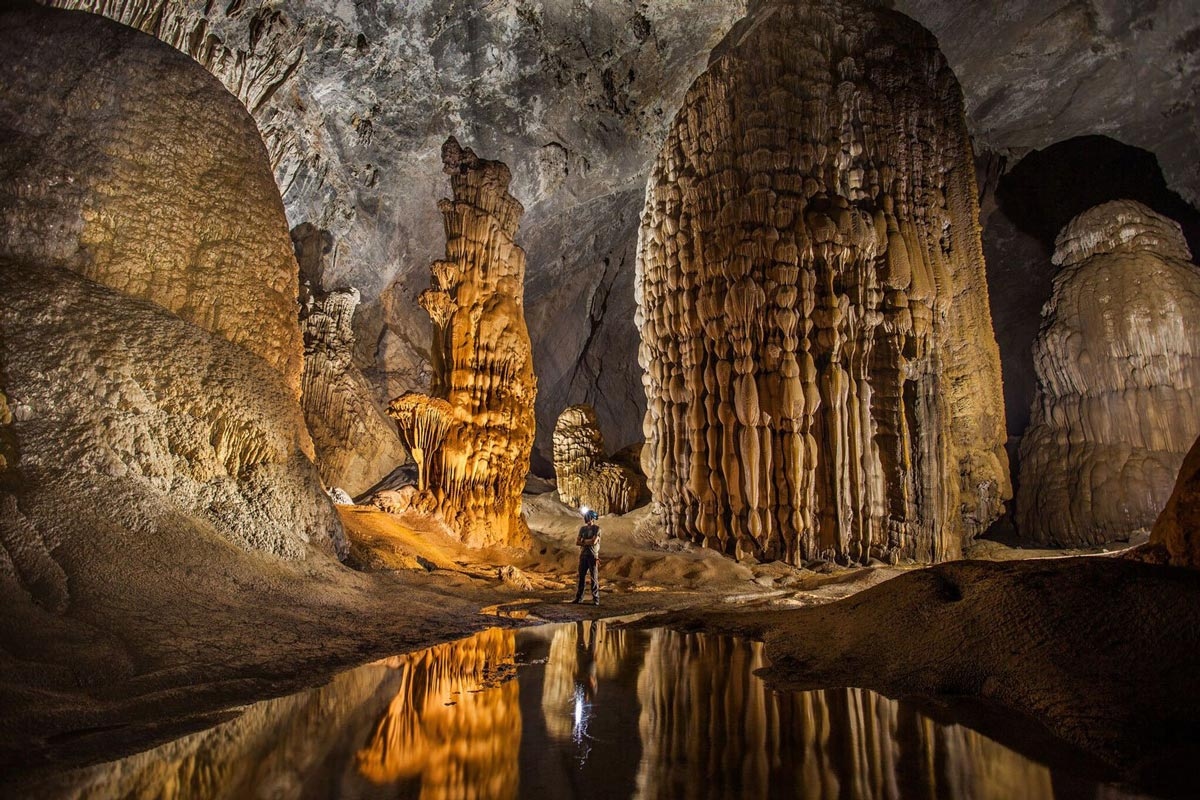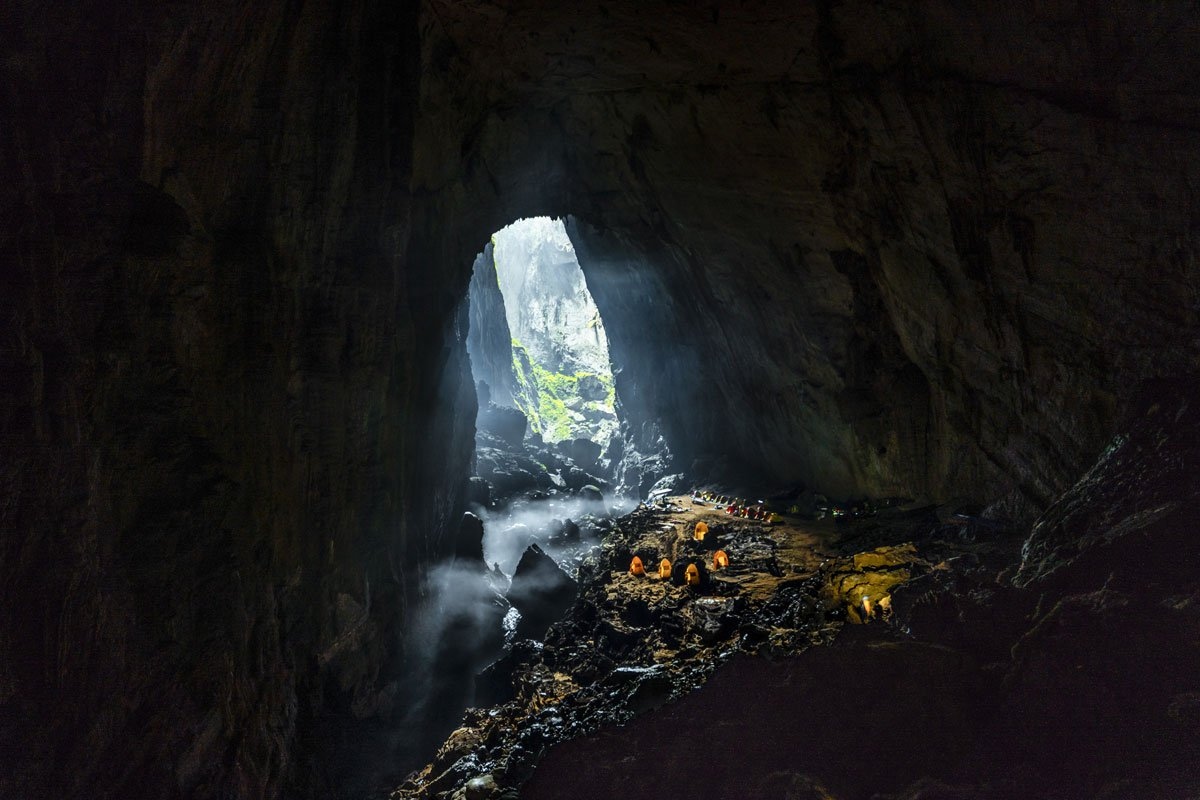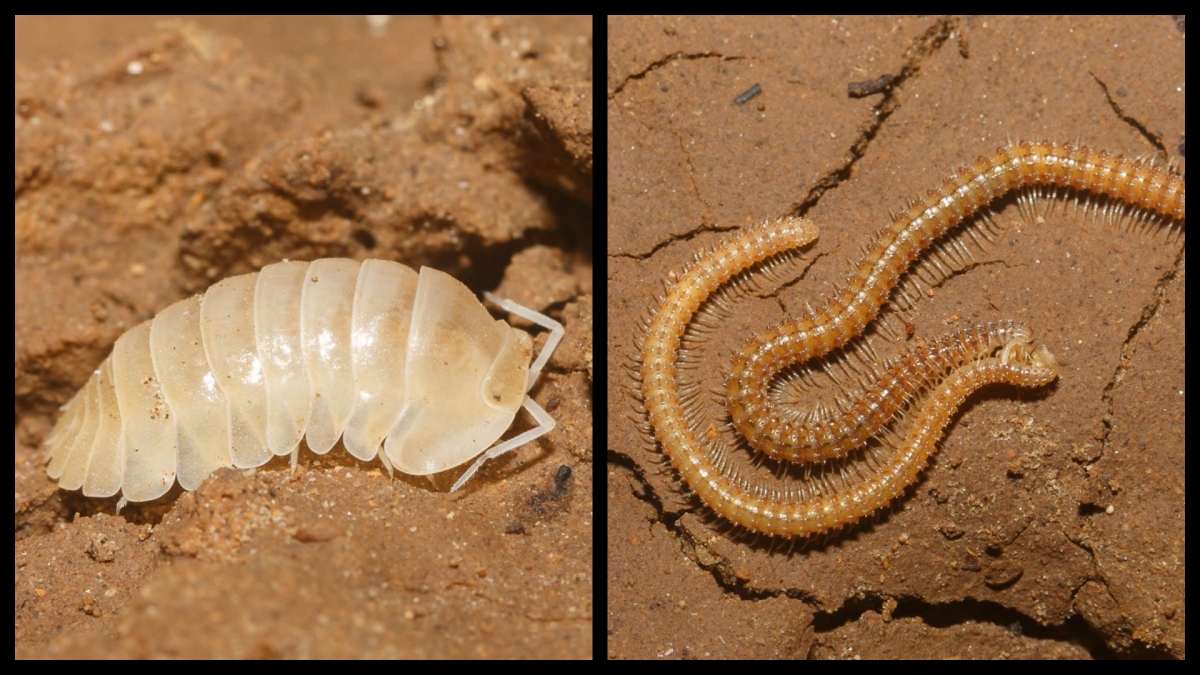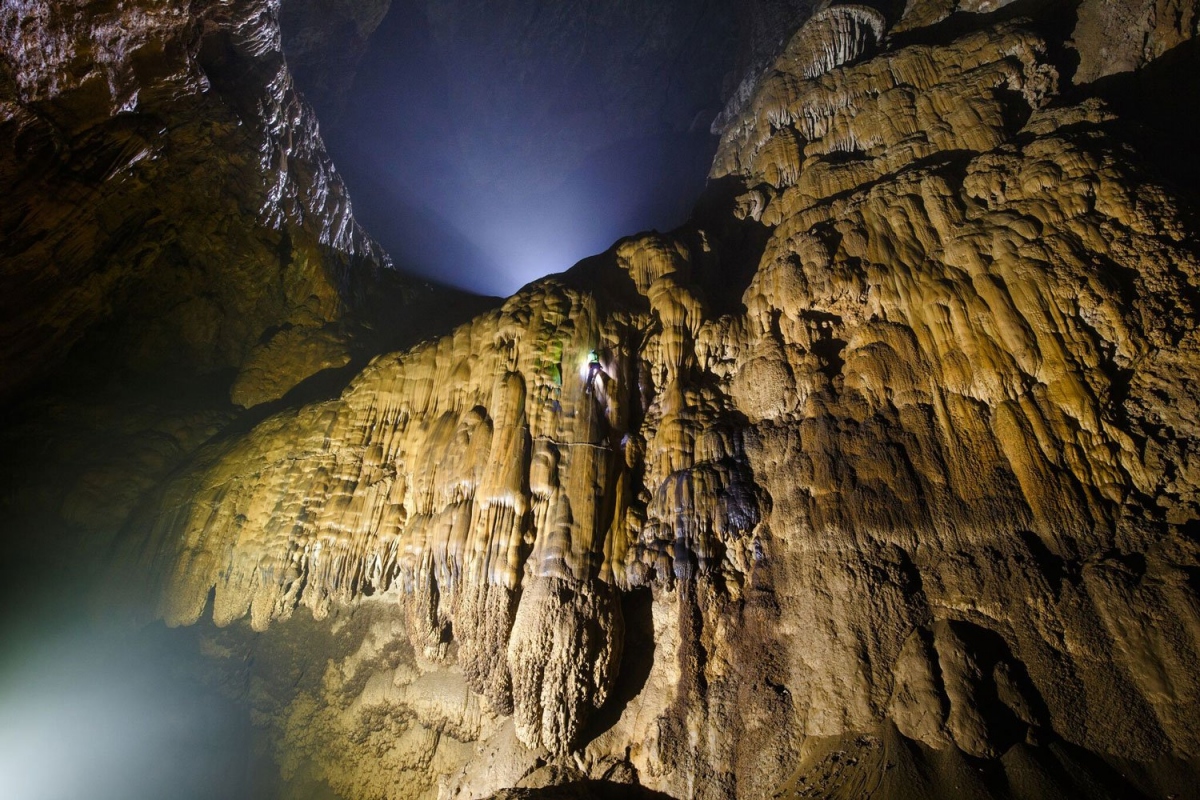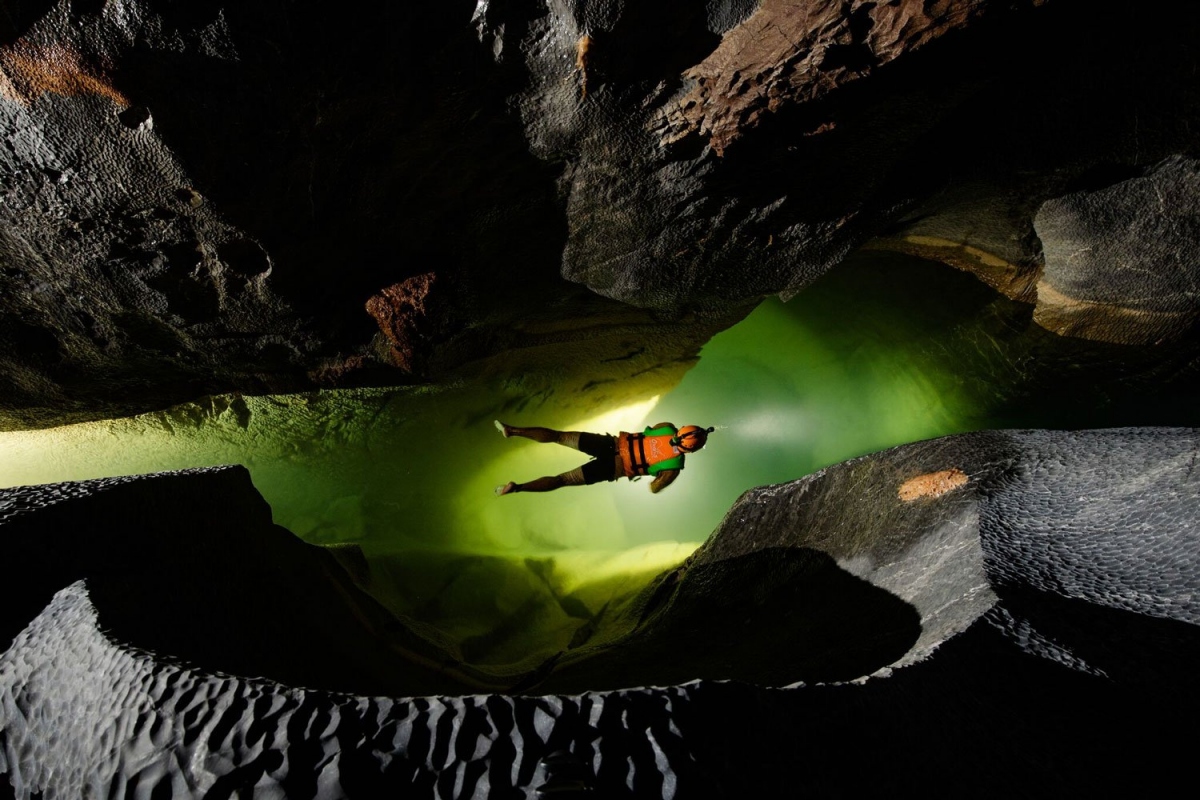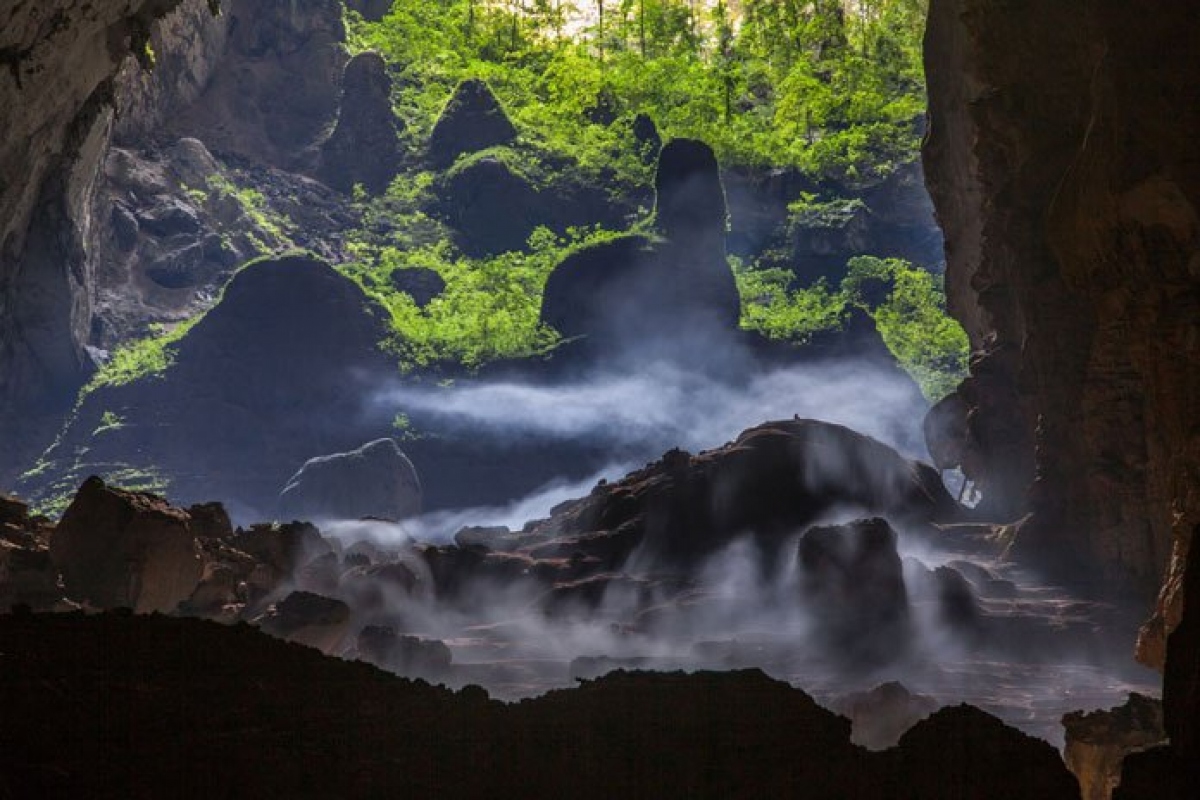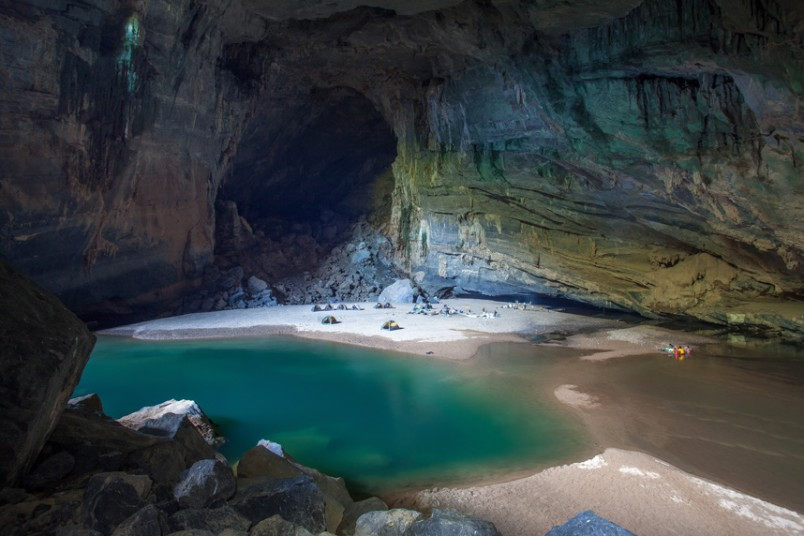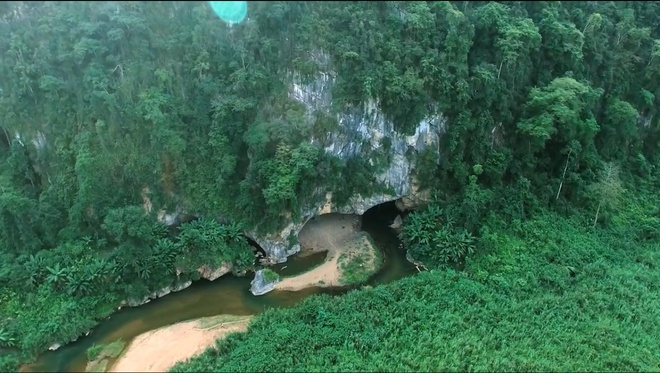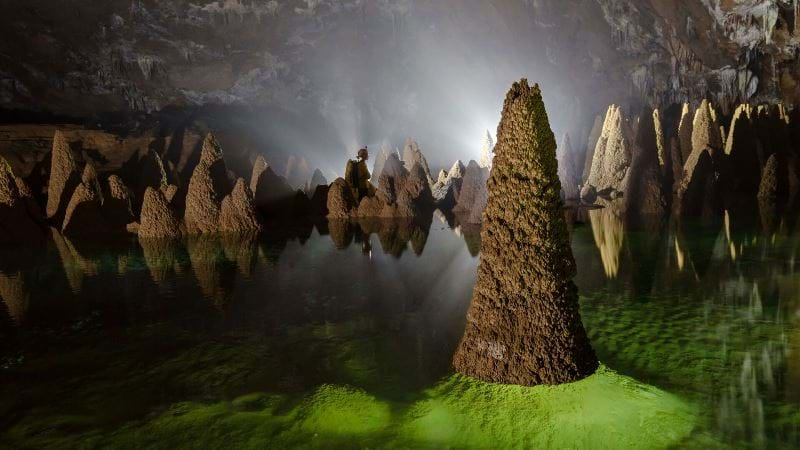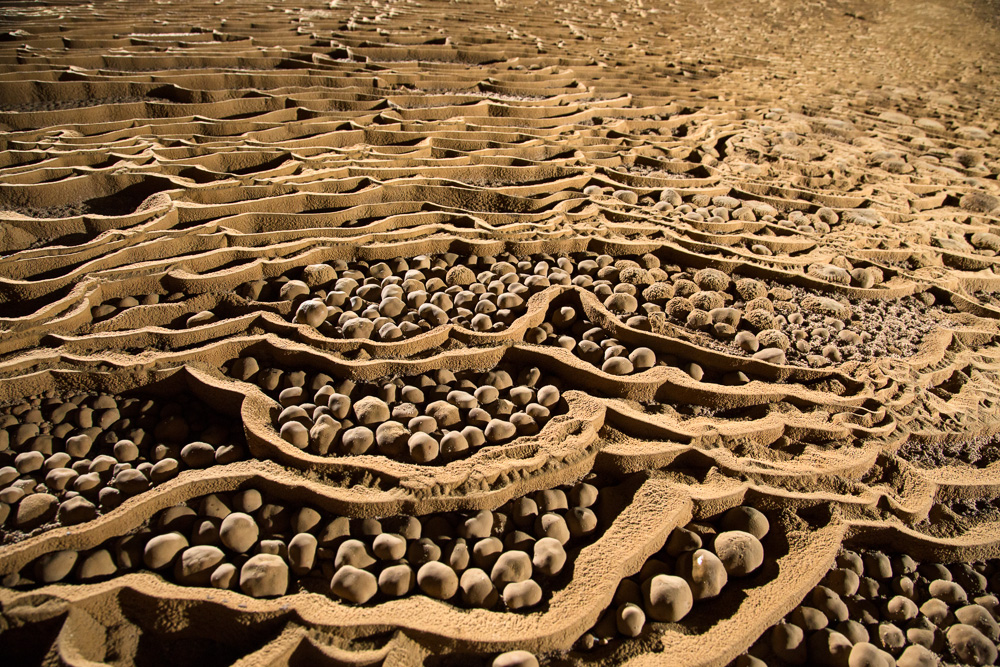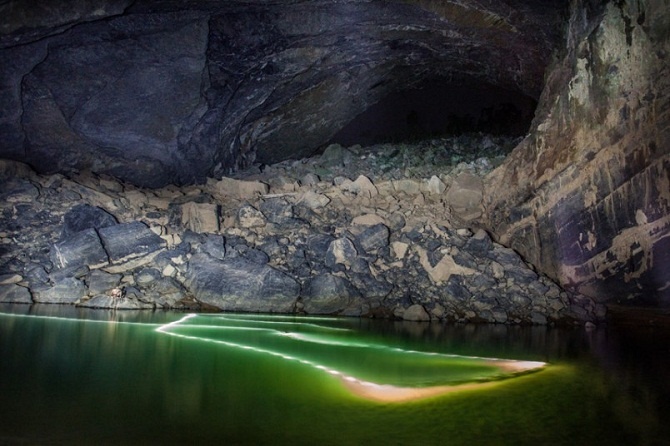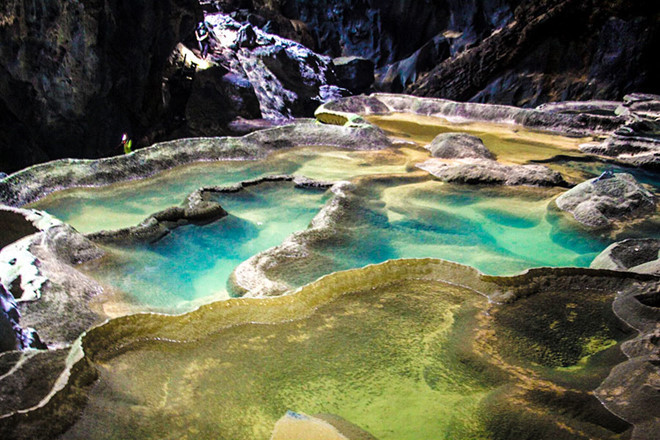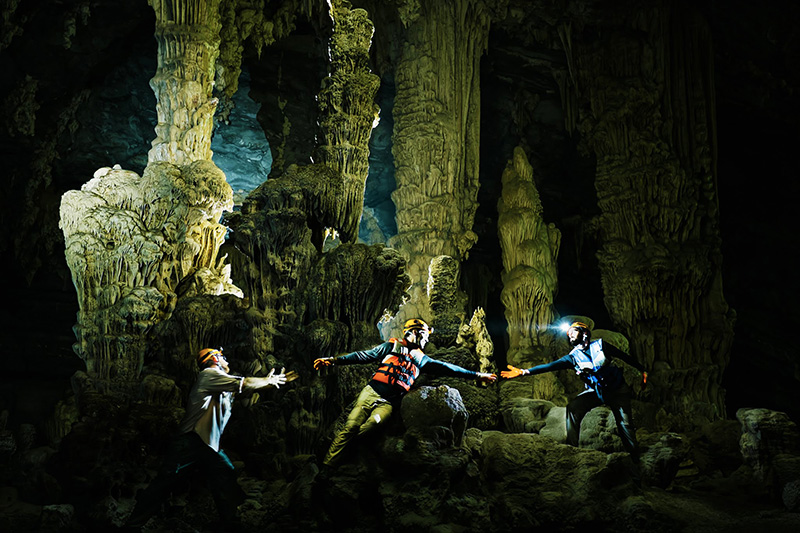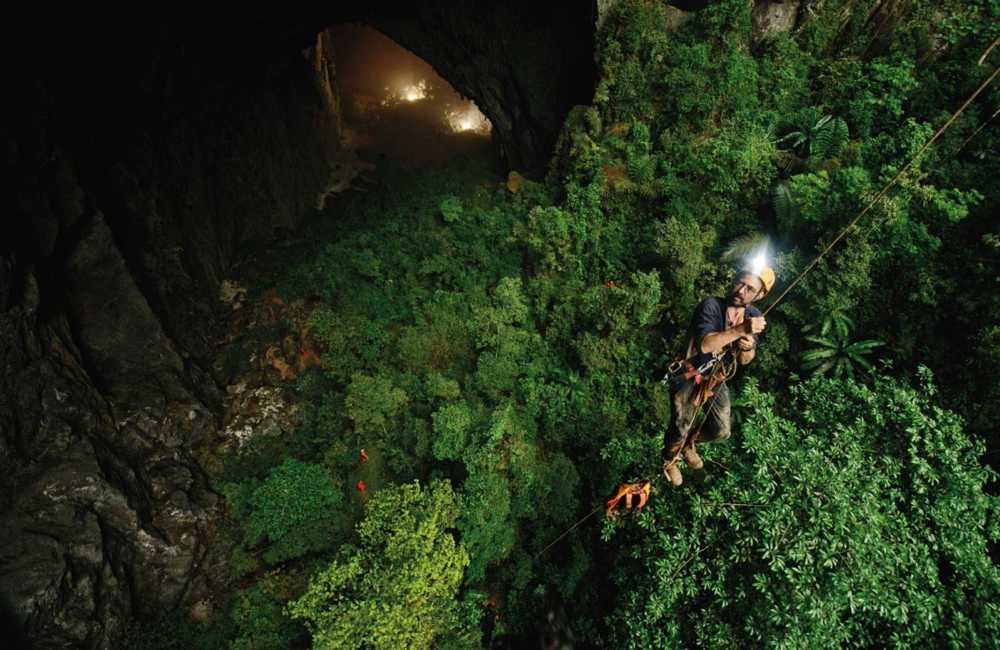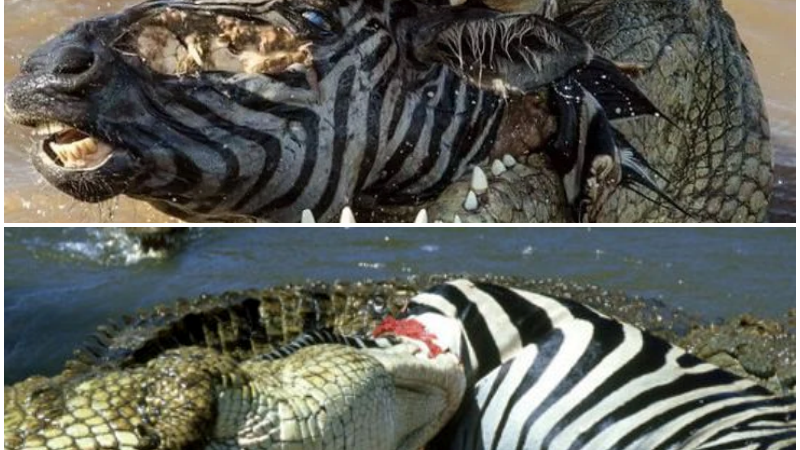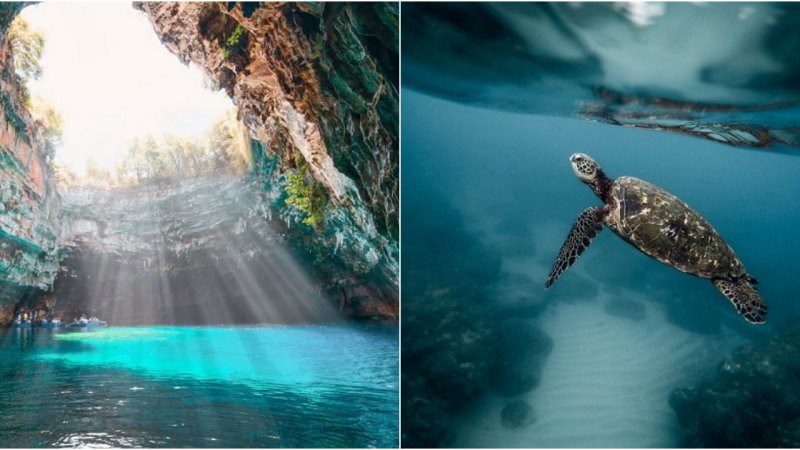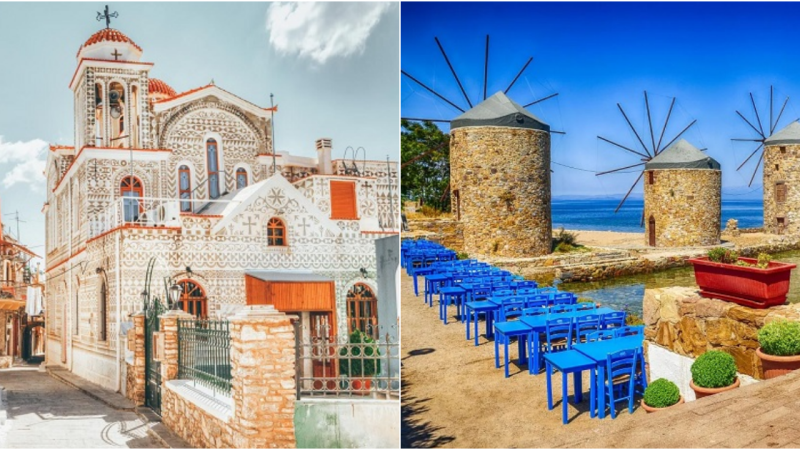Son Doong, a magnificent wonder, must be visited at least once in a lifetime.
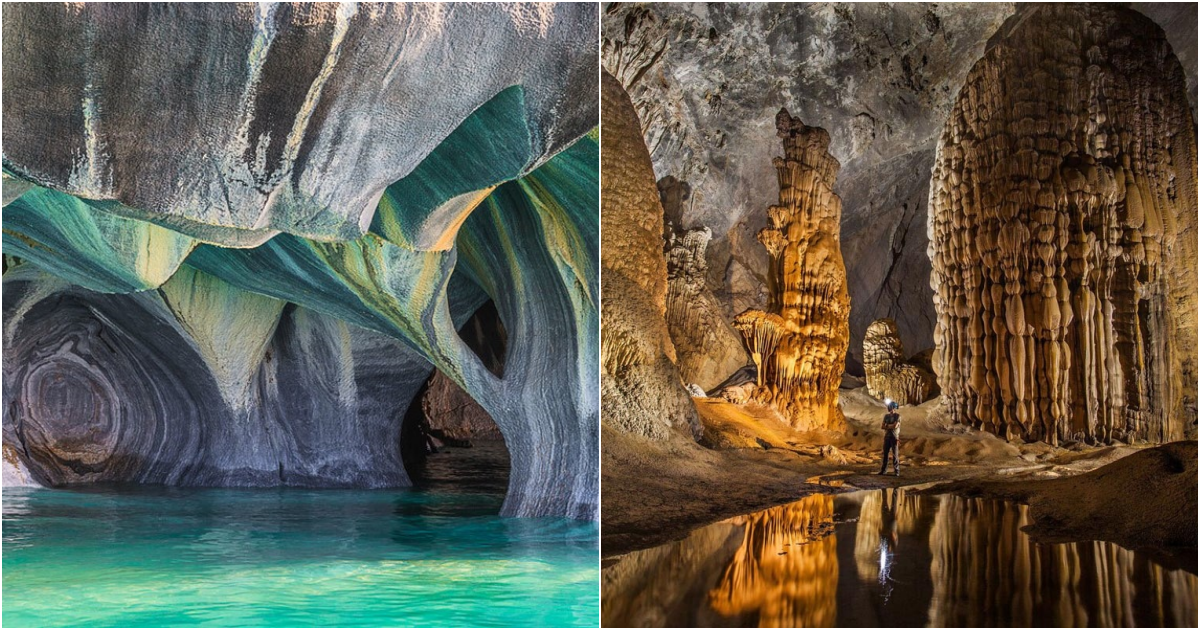
Son Doong Cave is a natural cave located in Tan Trach Commune, Bo Trach District, Quang Binh Province, Vietnam. Son Doong Cave is considered the largest natural cave in the world.
Being the largest cave in the world, Son Doong Cave holds numerous fascinating and captivating features that make it a must-visit destination for many travelers at least once in their lifetime.
Gigantic size.

There are various ways to determine the size of a cave, with the most common being calculating the cross-sectional area of the largest chamber. By this measure, Son Doong Cave is currently considered the largest cave in the world. The largest chambers of the cave have heights of up to 200m and widths of 150m, surpassing even the Great Pyramid of Giza in Egypt. The second-largest cave is Deer Cave in Malaysia, and the third-largest is En Cave, located not far from Son Doong Cave.
Lake and Underground River.
During the winter and spring seasons, near the exit of Son Doong Cave, there is a gigantic water-filled passage. The lake is so vast and deep that visitors are required to use boats to cross this area and continue their journey.
Sinkholes
SonDoong extends up to 9 kilometers, but it is rarely pitch dark inside. This is due to two giant sinkholes that act as “skylights,” providing abundant natural light that floods the cave and creates magnificent scenery.
Jungle inside the cave.
Light brings life, so beneath the large openings in the cave ceiling are unique dense forests. The climate and environment inside the cave are different from the outside, so the plant species in Son Doong Cave have distinct characteristics compared to the surrounding forest area.
Stalagmites from prehistoric times.
Son Doong is home to a stunning collection of magnificent stalagmites and stalactites that have formed over millions of years. These formations create unique and captivating shapes, with some stalagmites reaching enormous sizes, even taller than the Arc de Triomphe in Paris, France.
The “one-of-a-kind” camping site.

The two camping sites inside Sơn Đoòng Cave are definitely among the most beautiful and unique camping spots in the world. Both sites are located at the edge of the sinkholes, allowing travelers to gaze at the starry sky on clear nights.
The world of biodiversity.
The explorers of Son Doong have evaluated the incredibly diverse and unique ecosystem inside the cave. Visitors can encounter a wide range of organisms, from small creatures and insects to wild animals that inhabit the cave and the surrounding forest, such as monkeys, bats, and blind fish.
Vietnam Wall
Right in front of the cave entrance, there is a 90-meter-high rock wall, named “The Vietnam Wall” by explorers. It is one of the most challenging obstacles in the Son Doong cave expedition. Visitors will have to conquer this wall using ladders, ropes, and with the assistance of technical guides.
Cave swimming experience.
With numerous underground rivers and water pools, swimming in Sơn Đoòng Cave is both mandatory and an opportunity for visitors to have exciting experiences. The water inside the cave continuously flows and is therefore clean and cool. However, some areas have strong currents, so visitors must follow the guidelines provided by the tour guides.
Hunting for sunbeams and embracing clouds.
The images of sunbeams and mist have become the hallmark of Son Doong Cave. To capture and preserve these breathtaking moments, visitors are advised to come during the spring season when the sunlight penetrates through the sinkholes of the cave. The pervasive mist within the cave also adds an ethereal and enchanting touch to the scenery.
The images of sunbeams and mist have become the hallmark of Son Doong Cave. To capture and preserve these breathtaking moments, visitors are advised to come during the spring season when the sunlight penetrates through the sinkholes of the cave. The pervasive mist within the cave also adds an ethereal and enchanting touch to the scenery.
You will also encounter large stalagmites known as “cave pearls” inside the cave, which are composed of calcium carbonate.
Inside the cave, you will also come across an underground river flowing through, with a length of approximately 2.5km.
Here, you can observe coral relics and fossilized animal bones. The ceiling of the cave features numerous collapsed sections, creating skylights that allow sunlight to penetrate into the interior of the cave. This creates favorable conditions for the growth of vegetation carpets inside the cave.
